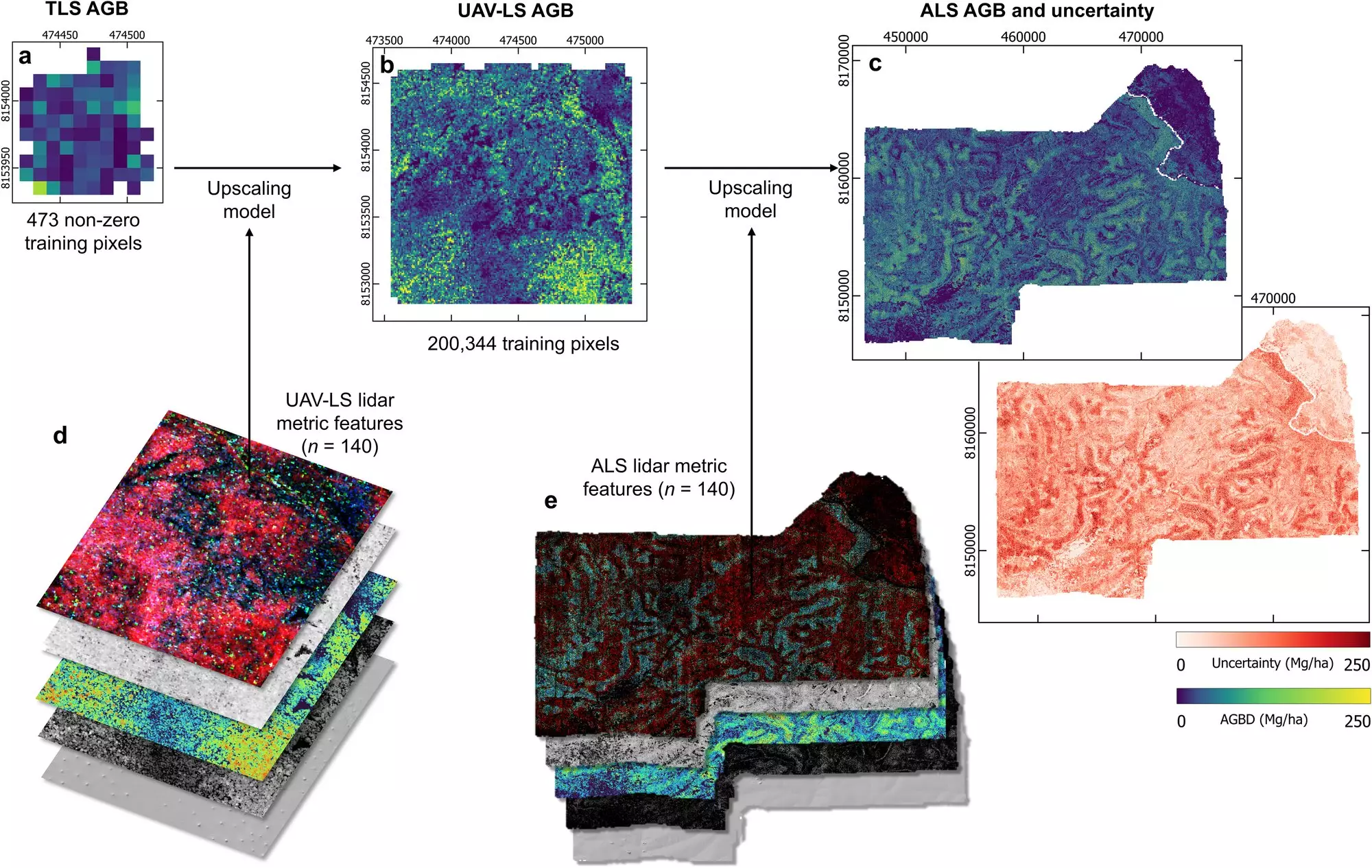Miombo woodlands, a distinctive ecosystem spanning large swathes of Sub-Saharan Africa, have recently come into the spotlight due to groundbreaking research that reassesses their capacity to sequester carbon. Traditionally viewed through a narrow lens of traditional monitoring methods, these woodlands possess far more significance than previously believed. As studies reveal, they could store up to 2.2 times more carbon than earlier estimates suggested. This underappreciation not only threatens the ecological balance but also undermines efforts towards climate change mitigation.
The Research Breakthrough
A recent study published in Communications Earth & Environment, led by Sylvera and involving a multidisciplinary team including noted researchers from UCL, delves into the wealth of carbon stored in these vital forests. By employing advanced techniques such as ground-based assessments and laser scanning via drones and helicopters, the team collected data from over 8 million trees across 500 square kilometers of miombo woodlands. The depth of analysis provided by these methods offers a more nuanced understanding of woodlands’ carbon stocks, revealing that they play a crucial role in our global carbon equation.
At first glance, findings may appear to critique previous methodologies, highlighting their limitations in estimating aboveground biomass accurately. Conventional allometric methods rely on basic metrics like tree diameter and height, leaving large trees–the true giants of carbon storage–often underrepresented. The innovative use of multi-scale lidar data marks a substantial advancement, emphasizing the urgent need for more sophisticated monitoring techniques.
The Implications of Underestimated Carbon Storage
Extrapolating findings from this research suggests that miombo woodlands might harbor an additional 13.6 billion metric tons of carbon dioxide equivalent in their biomass than previously thought. To comprehend the gravity of this information, consider the staggering impact of deforestation in these regions: nearly three times the land area of the United Kingdom has been lost, contributing significantly to climate change. This should send alarm bells ringing, urging policymakers and conservationists alike to shift focus toward protecting these ecological networks rather than overlooking them.
The implications extend beyond the scope of environmental protection; they resonate with economic urgency. The potential carbon stocks underappreciated by traditional methods translate into actionable financial opportunities. As global investors increasingly look for sustainable investments, the underestimation of these woodlands may unintentionally dissuade funding directed at carbon credits and climate-friendly initiatives.
Advancements in Carbon Measurement Technologies
The crux of the research highlights the transformative potential of technology in redefining conservation efforts. The precision demonstrated through the new multi-scale lidar methods paved the way for more accurate assessments of biomass. This technological progress signifies a paradigm shift where confidence in carbon measurements can lead to more robust financing options for nature-based solutions.
Dr. Laura Duncanson’s insights into the integration of satellite data with ground-level measurements reflect this growing synergy between technology and ecology. The ability to quantify and map carbon reserves accurately not only fosters trust but also legitimizes investments in forest restoration and conservation.
Call to Action: Protecting Miombo Woodlands
This newfound perspective on miombo woodlands energetically calls for greater advocacy and action from various stakeholders, including governments, corporations, and consumers. The stakes are high; the impact of destroying these ecosystems could release far more carbon – and thus, exacerbate climate change – than previously understood. This scenario underscores a crucial message: protecting these woodlands must ascend the priority ladder in climate action frameworks globally.
Equally significant is the role of finance in mitigating climate challenges. As Allister Furey from Sylvera aptly articulated, directing funding toward known solutions is imperative. Investors must be educated and motivated to understand the value embedded in ecosystems like miombo woodlands, where clarity in measurements will be key to driving investment.
The research findings advocate for a comprehensive approach to safeguarding climate health while addressing the dual narratives of sustainability and economic viability. It is in protecting these often-overlooked ecosystems that we can foresee a pathway toward a more balanced relationship between humanity and the environment – one that respects natural resources while decisively combating the climate crisis.
The intricate dance between research, technology, and finance illuminating the true carbon potential in miombo woodlands reveals not only the importance of these ecosystems but also the broader implications for global climate initiatives, calling forth urgent necessity for immediate action and investment.

